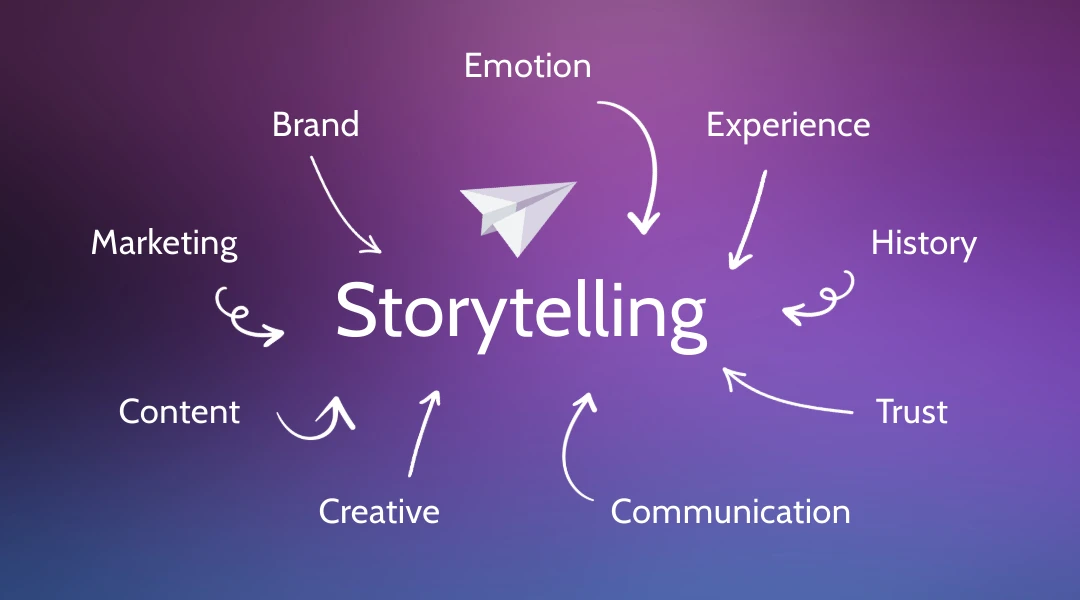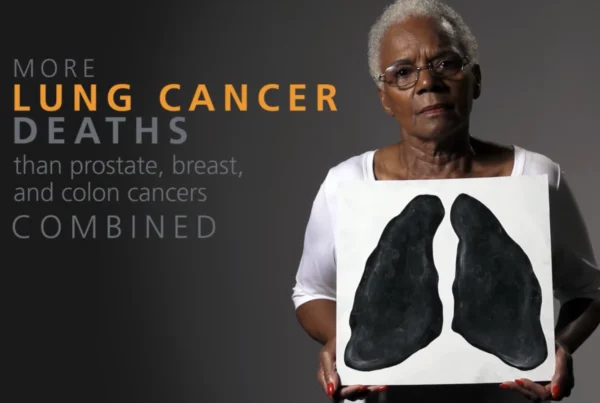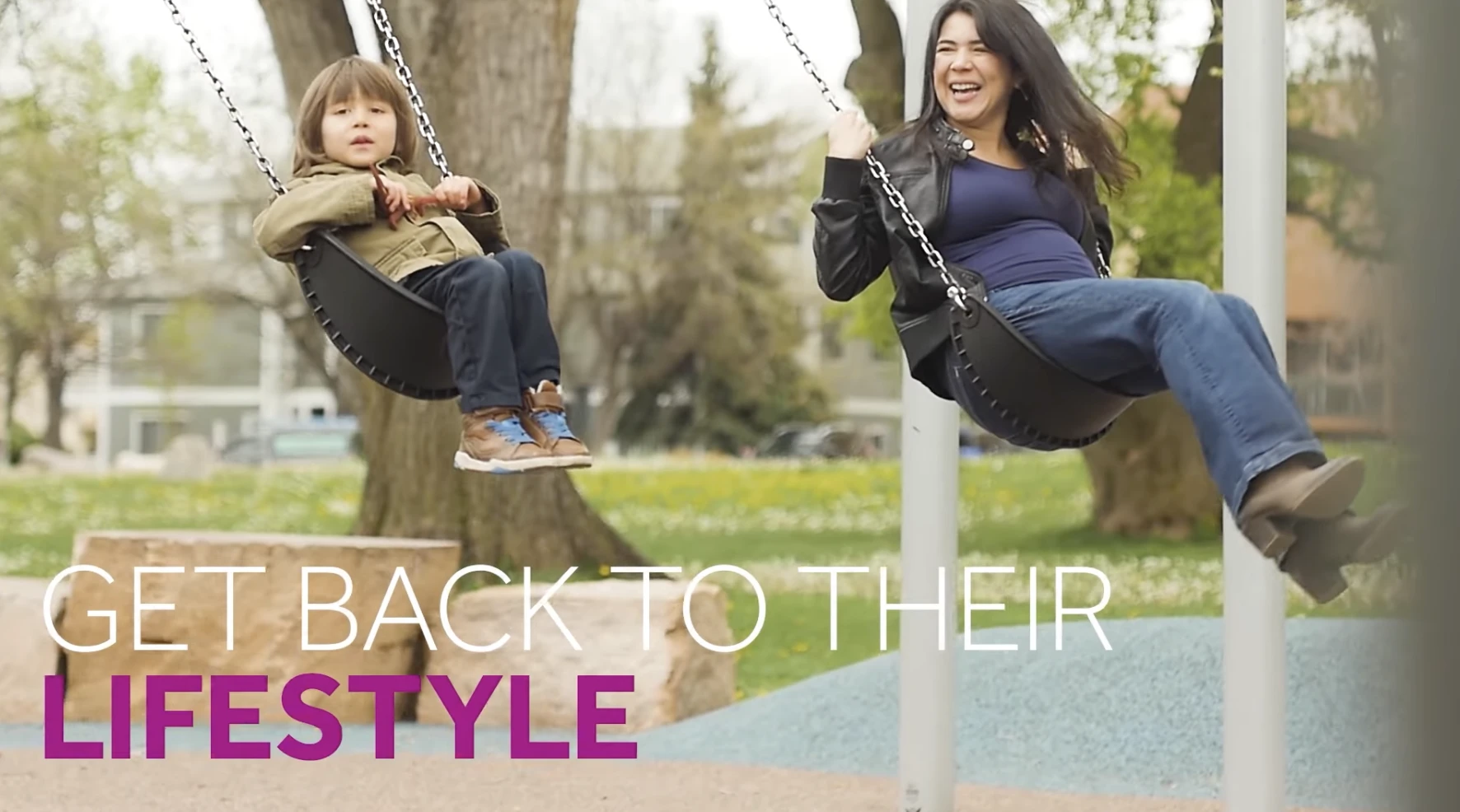
We believe storytelling is more than a buzzword — it’s a strategic imperative. From Fortune 500s to growing startups, companies that lean into authentic, well-crafted stories aren’t just communicating — they’re forging deep connections.
Why is storytelling in marketing so important?
Humans are wired for story. Neuroscience confirms it: when we hear a compelling narrative, our brains release oxytocin, the empathy chemical. Stories engage more of the brain than data alone. That’s some mighty powerful biology that should not be overlooked.
Storytelling: where emotion and connection collide
If music is the language of love, then storytelling is most certainly the language of emotion, especially when executed well. Stories reflect a genuine understanding of your audience that goes far beyond features and benefits. When you share their ambitions and frustrations, you build deeper engagement and lasting affinity. Employees and customers are your brand’s most important storytellers. When they feel connected to something meaningful, they engage more fully, and all that goodness is bound to come full circle.
There’s not just one way or one time when storytelling is clearly the answer. There are many opportunities to incorporate storytelling into your communications.
Ready to tap our team’s expertise?
Submit this form to schedule a consultation, or contact Don Poe directly at 303-449-6086.

Brand-Level
Big, bold vision pieces
(videos, keynote talks, internal hype)

Campaign-Level
Messaging aligned to audience and channel
(account-based marketing, social media, digital)

Tactical-Level
Grounded, real-world storytelling
(case studies, testimonials, podcasts, blogs)
Storytelling helps companies:
Create deeper emotional connections
Make messages more memorable and meaningful
Translate complex ideas into relatable narratives
Inspire action and build advocacy
Resist the temptation to “sell”. Storytelling is about connecting on a deeper level. Invite your audience into a journey they care about.
How to use storytelling in marketing
Start with the “Why”
Simon Sinek’s Golden Circle isn’t just a TED Talk—it’s a roadmap. Begin with purpose. Why does your brand exist? What beliefs drive your team? We explore this framework in-depth in The Golden Circle, where we show how clarifying your “why” transforms messaging, defines a clear sense of purpose, and sets the foundation for every great story.
Make the customer the hero
Too often, brands cast themselves as the star. But the real hero is your customer. Position yourself as the guide, the Obi-Wan to their Luke.
Pro-Tip: This customer-centric storytelling approach is one of our most popular strategy pieces.
Show, don’t just tell
Incorporate visual storytelling through video, photography, and infographics to bring your narrative to life. HubSpot found that visual content is 40x more likely to be shared on social media. And it’s not just about virality—it’s about clarity and impact.
Use authentic voices
Real customer stories (a.k.a. testimonials or case studies) carry more weight than any ad copy ever could. Think of these as proof points in narrative form that help craft your customer storytelling. Let your audience see themselves in your success stories.
Embrace conflict and resolution
Great stories involve a challenge or transformation. Don’t shy away from the struggle. Show how your brand or products help customers overcome real obstacles. That’s where trust is built.
Real-world wins: B2B & healthcare storytelling in action
GE Healthcare:
Featuring real patients, clinicians and employees, GE connected the power of healthcare to transform lives in their “Care That Can” campaign.
Salesforce:
Customer success stories portray transformation in relatable, narrative form.
3M:
Their “Science Applied to Life” campaign connects innovation with real-world applications.
Let video be your best storyteller
Video combines visual, auditory, and emotional elements to fully immerse your audience. That makes it one powerhouse of an effective tool in your communications toolbox. Unlike static content, video can convey complex narratives quickly and memorably by blending compelling visuals, music, dialogue, and pacing.
Best storytelling techniques for businesses
Need a springboard for your storytelling initiatives? Start your next brainstorm using one or all of these techniques.
- Follow the classic story arc (setup-conflict-resolution)
- Build detailed customer personas that include psychographics to inform your storytelling
- Tap into universal themes, for example, transformation, belonging, or perseverance
- Consider episodic content to sustain engagement
Studies show that viewers retain 95% of a message when delivered via video compared to only 10% when reading text, making video an essential tool for brands looking to leave a lasting impression.
Videos earn MVP status when it comes to your social media, where algorithms prioritize video content, and consumers are more likely to engage, share, and act after watching an emotional or inspiring story. From brand anthems to product explainers to leveling-up text-based customer testimonials, video can bring your story to life in a dynamic, authentic, and scalable way.
In an age of algorithms, storytelling is your company’s human heartbeat. It turns messages into movements and customers into advocates. We’ve spent over 30 years helping companies uncover and share the stories that matter most. From high-tech to healthcare, we know how to bring your message to life. Watch this reel for a taste of our past work.
The AI factor: Storytelling in a tech-driven world
The rise of AI has raised valid questions about the role of human creativity in marketing. But the truth is, technology can’t replace storytelling. In fact, it may very well amplify it.
Generative AI may handle data and draft content, but it lacks the human insight to craft truly meaningful narratives. We believe that AI won’t replace storytellers. Instead, it has the ability to empower our storytelling capabilities. In this AI-enhanced world, the brands that win will be those that can pair technology with empathy and facts with emotion. We can expect automation to optimize the delivery, but only genuine, authentic storytelling can humanize the message.
Soft skills like empathy, communication, and critical thinking are more valuable than ever. AI might automate tasks, but it can’t replace the uniquely human skill of storytelling.
Ready to tell your story?
Our strategists, writers, and content creators are ready to help you bring your story to life. Contact us to get the ball rolling.
Ready to elevate your messaging strategy?
Submit this form to get started, or contact Don Poe directly at 303-449-6086.


